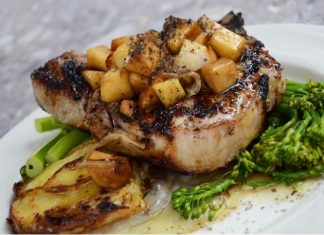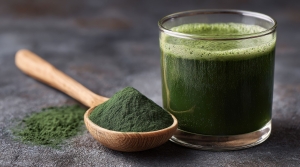Pushing your body to the limit as an athlete during training or competition and daily workouts is probably one of the characteristics of any successful athlete. However, when pain strikes, or injury flares up, especially sciatica pain, it can sideline athletes and slow down recovery. While stretching, physical therapy and pain relief techniques play a huge role in managing pain, many athletes overlook the vital importance of nutrition in supporting recovery in your muscles and reducing inflammation.
By focusing on the right food and supplements, athletes can improve their recovery and reduce their pain by supporting their nerve health and body recovery to better manage their sciatica pain.
Sciatica Pain’s Impact on Athletes
Sciatica refers to pain that occurs when the sciatic nerve (which runs from the lower back all the way down to the legs) is compressed or irritated. This can cause shooting pain, tingling and numbness that causes discomfort to athletes, especially ones who rely a lot on their lower body to perform.
Common causes of sciatica include repetitive stress injuries (from high impact sports), tight muscles (such as piriformis), herniated discs (from excessive spinal load) and poor movement techniques (and postural imbalances). Athletes who look for immediate relief for sciatica pain should look into stretches like:
- Cat-cow stretch
- Quadruped arm and leg Lift
- Piriformis stretch
- Knee-to-chest stretch
Since inflammation plays a huge role in nerve pain, anti-inflammatory nutrition strategies are key to reduce pain and support proper recovery, which we’ll explore more below.
3 Best Nutritional Strategies to Manage Sciatica Pain for Athletes
Proper nutrition isn’t just about fueling your workout, but it’s also key in helping your body repair and recover properly. Below are a few strategies that athletes can follow to minimize pain and keeping your body functioning at its very best:
- Seek Anti-Inflammatory Foods and Avoid Foods That Worsen Inflammation:
Inflammation is one of the biggest contributors to pain including sciatica pain. So below are foods that can either improve or worsen your inflammation naturally:
Foods to Avoid:
- Processed food and refined sugar.
- Fried foods (and food high in trans fats)
- Excessive gluten and/or dairy
Foods to Seek:
- Leafy greens (e.g kale and spinach) which reduces systemic inflammation.
- Nuts and seeds (e.g walnuts, flaxseeds and chia seeds) which provide healthy fats that improve nerve function.
- Turmeric (which contains curcumin) since it has powerful anti-inflammatory properties.
- Berries (e.g blueberries and strawberries) as they are rich in omega3 fatty acids which help reduce inflammation.
2) Get Key Micronutrients That Support Nerve Health
A healthy nerve = a healthy body. Sciatica is related to nerve irritation so consuming nutrients that are nerve-supporting can help repair nerve damage and improve function.
Key vitamins and minerals that can help nerve health:
- Vitamin D helps with nerve function and repair.
- Magnesium - helps muscles relax and helps prevent compression in your nerves.
- B Vitamins (e.g. B6, B12 and folate) - essential for nerve repair and function.
- Vitamin C and Zinc help in tissue repair and healing.
Pro tip: Many athletes struggle to get these nutrients from food alone. Finding the best greens powder can fill the gaps, providing your body with all the essential micronutrients for proper nerve and muscle function (and recovery!).
3) Optimize Your Protein Intake for Proper Recovery
Since athletes with sciatica often have muscle imbalances and/or weakness, getting enough protein is crucial to properly repair your muscles and reduce inflammation.
The best protein sources for athletes to seek are:
- Lean meats (e.g turkey, chicken and grass-fed beef)
- Plant-based proteins (e.g lentils, chickpeas and quinoa)
- High-quality protein powders
A well-balanced diet with enough protein, healthy fats, micronutrients and anti-inflammatory foods can help athletes manage sciatica pain symptoms and help speed up recovery while keeping your body healthy and pain-free long-term!
Bonus: Additional Recovery Strategies for Sciatica Pain
Beyond nutrition, targeted recovery techniques can help alleviate pain and prevent flare-ups. These include things like:
- Staying Hydrated (drink at least half your body weight (lbs) in ounces of water daily)
- Gentle stretching and mobility (before and after physical activity)
- Topical pain relief solutions (e.g. MEDISTIK) for fast relief when pain flares up.
- Massage therapy and/or physical therapy.
- Improving core stability and strength to support spinal alignment.
Conclusion
Sciatica pain can severely impact an athlete’s journey towards peak performance and longevity. The right nutrition plan can play a huge role in the recovery and pain management process for athletes.
By using the tips above, mainly prioritizing anti-inflammatory foods, getting nerve-supporting nutrients and optimizing your protein intake can help athletes maximize their chances of staying healthy and pain free. This, along with proper stretches, pain relief techniques, proper hydration and a mindful recovery process can support athletes in their healing process and help them maintain longevity as athletes.






